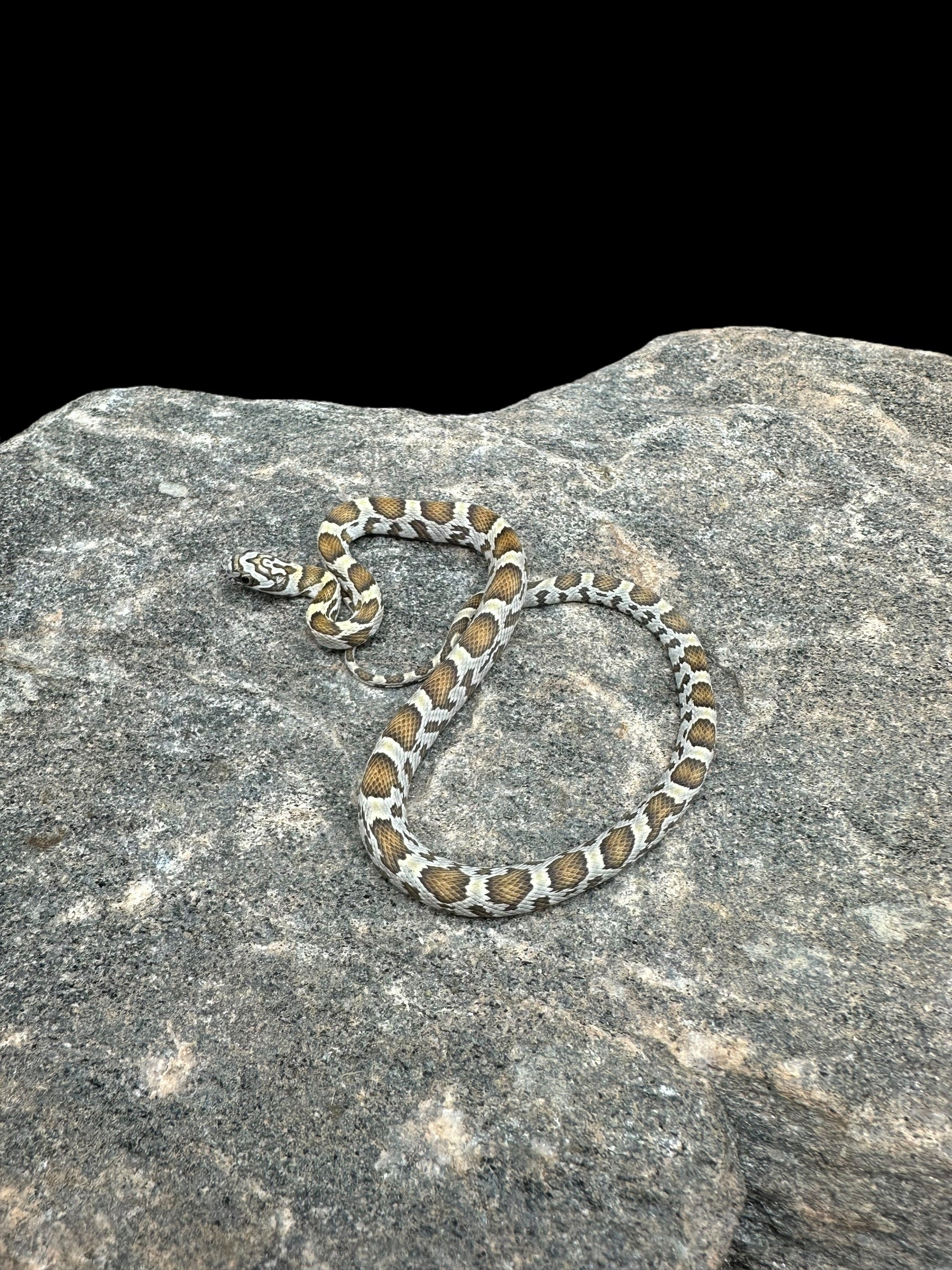Photo Disclaimer
Description
Corn Snake (Honey)
Scientific Name: Pantherophis guttatus
Common Name: Corn Snake
Species Overview
Size: Adults typically reach 3–5 feet (0.9–1.5 m) in length, with a slender, muscular build and smooth, glossy scales.
Appearance: The Honey Corn Snake is a warm, golden-toned morph that glows with rich amber and butterscotch hues. This Corn Snake displays a soft golden-yellow to orange base color with lighter tan or caramel saddles outlined in pale gray or cream. The eyes are bronze or amber in tone, matching the snake’s warm overall palette. The Honey morph results from the combination of the Caramel and Hypomelanistic genes, producing a smooth, glowing coloration with reduced contrast and no black pigment. The overall effect is a clean, elegant, honey-like sheen that shifts gently under natural light, making this morph one of the most visually harmonious combinations in Corn Snake breeding.
Distribution: A selectively bred morph of the Corn Snake (P. guttatus), originating from the combination of Carameland Hypomelanistic lines.
Habitat: Wild Corn Snakes inhabit forest edges, grasslands, and agricultural areas throughout the southeastern United States. In captivity, they thrive in naturalistic terrariums with climbing structures, secure hides, and natural substrate for burrowing.
Behaviour: Calm, curious, and confident. Corn Snakes are crepuscular, most active during dawn and dusk. The Honey Corn Snake retains the species’ calm nature and steady feeding habits, making it ideal for keepers seeking a visually striking yet easy-to-manage animal.
Captive Care
Enclosure: A naturalistic 40-gallon terrarium (36” × 18” × 18”) or larger is recommended for adults. Use a soil-based or bioactive substrate layered with leaf litter to promote burrowing and exploration. Provide multiple hides, cork flats, climbing branches, and plant cover for enrichment and security.
Temperature & Humidity: Maintain a daytime gradient of 75–82°F (24–28°C) with a basking area around 86–88°F (30–31°C). Allow nighttime drops to 70°F (21°C). Maintain humidity between 40–60%, with a humid hide available during shedding.
Diet: Offer frozen-thawed rodents every 7–10 days for juveniles and every 10–14 days for adults. Prey size should be roughly 1.25× the width of the snake’s mid-body.
Behaviour in Captivity: Calm, gentle, and adaptable. Corn Snakes thrive in naturalistic enclosures that promote both climbing and hiding. The Honey Corn Snake’s bright, golden coloration and relaxed temperament make it a standout choice for both new and experienced keepers.
Special Considerations: Honey Corn Snakes may deepen slightly in tone with age, developing more pronounced golden hues. Moderate, indirect lighting helps enhance their coloration without washing out their natural warmth.
Genetics Note
Caramel (Recessive)
Removes red pigmentation and enhances yellow and brown tones, producing rich golden coloration.
Hypomelanistic (Recessive)
Reduces black pigment, brightening overall coloration and enhancing yellows and oranges.
Genetic Combination Summary
The Honey Corn Snake expresses two recessive traits:
-
Caramel = Removes red pigment, enhancing golden and brown coloration
-
Hypomelanistic = Reduces black pigment, brightening and softening overall color
Together, these genes create a Corn Snake with warm amber coloration and soft contrast. The Honey Corn Snake is a beautifully balanced morph—bright yet natural-looking, and genetically versatile for producing combinations such as Honey Motley, Butter, or Honey Tessera.


